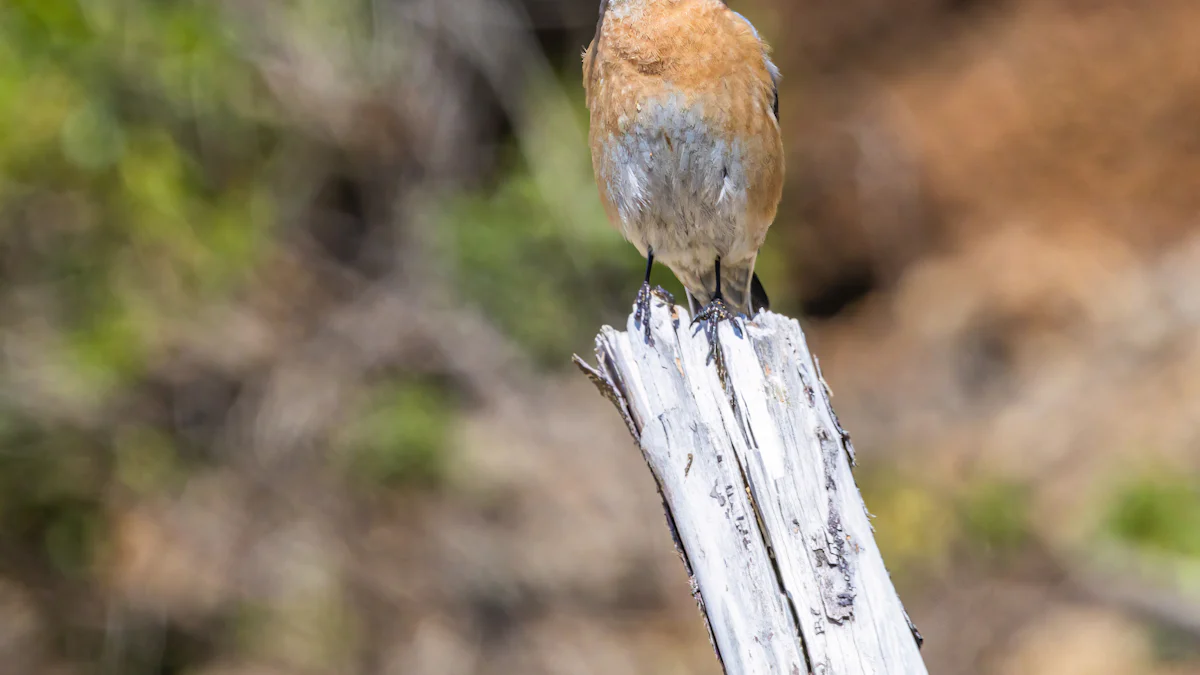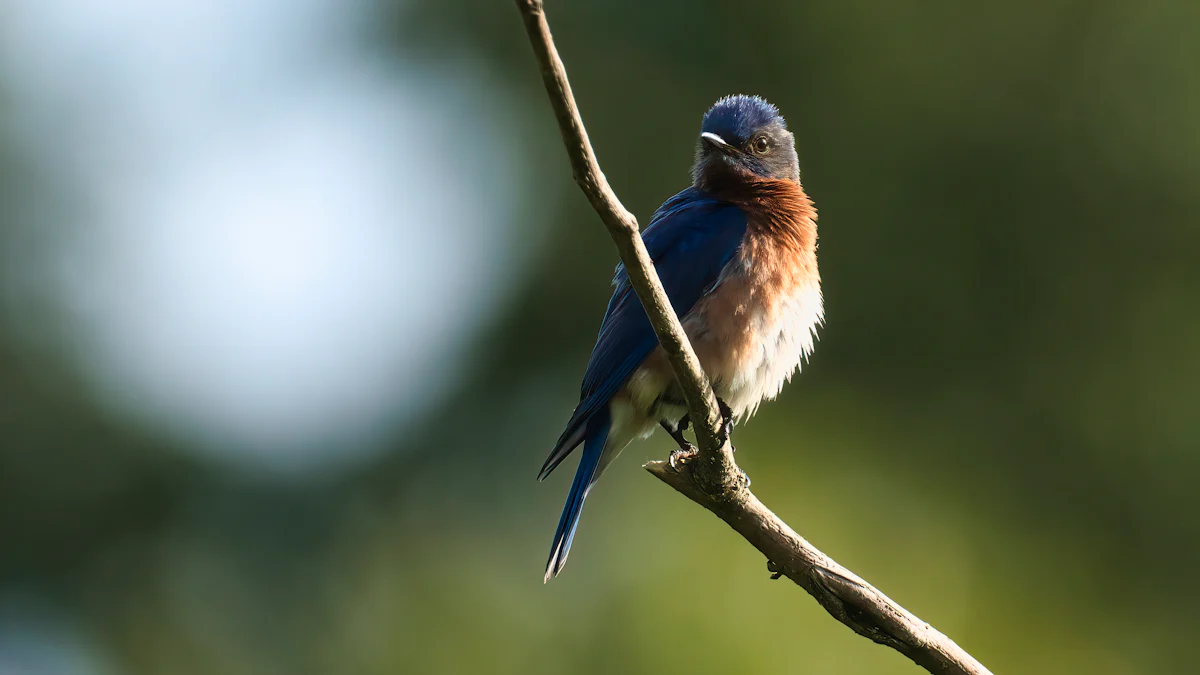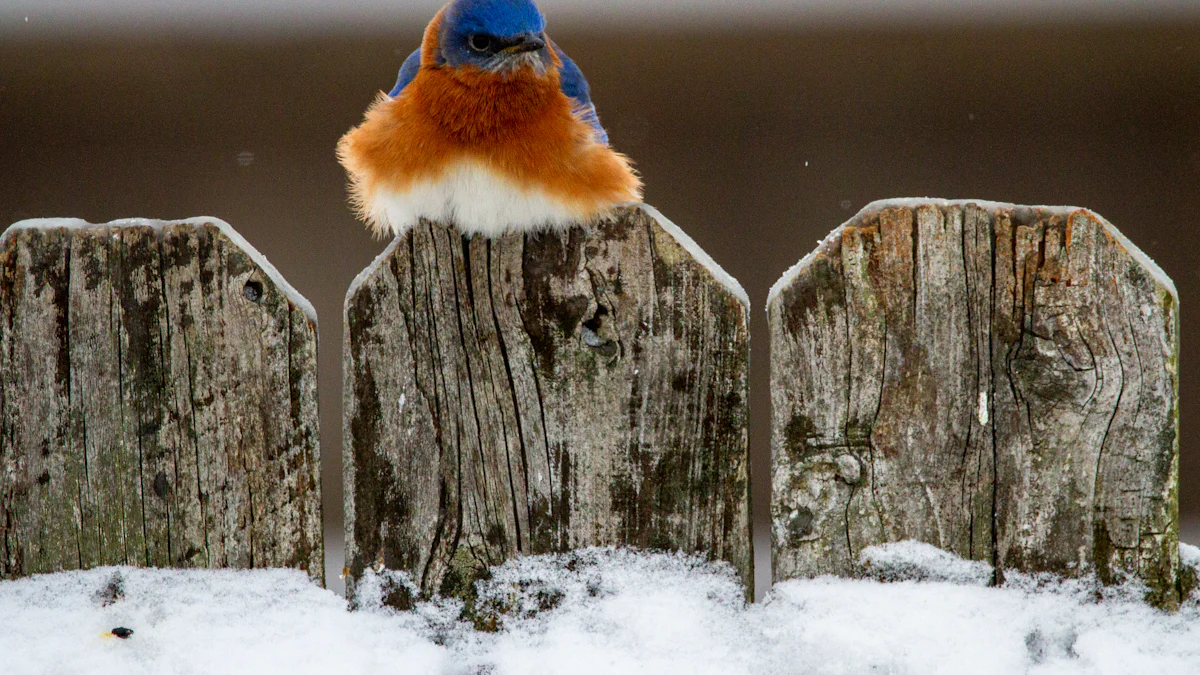
Bluebirds love mealworms, and you can easily attract them to your garden with the right types. These little birds find certain mealworms irresistible. Offering them the right kind can turn your garden into a bluebird haven. Whether it’s live, dried, or flavored mealworms, each type has its unique appeal. Dried Mealworms Bluebirds are especially convenient, allowing you to feed these charming birds all year round. By choosing the right mealworms, you ensure that bluebirds get the nutrition they need while enjoying their delightful presence in your garden.
Key Takeaways
- Bluebirds are particularly attracted to live mealworms, which provide essential protein and nutrients, especially during nesting season.
- Dried mealworms are a convenient year-round option that retains much of the nutritional value of live mealworms, making them a practical choice for feeding bluebirds.
- Flavored mealworms, infused with tastes like berry and fruit, can entice bluebirds to visit your garden more frequently, adding variety to their diet.
- Proper presentation is key: use shallow dishes or specialized feeders to make mealworms easily accessible to bluebirds while preventing competition from other birds.
- Timing matters—offer mealworms in the early morning and late afternoon when bluebirds are most active, and increase feeding frequency during the breeding season.
- Strategically place feeders in quiet, open areas to create a safe environment for bluebirds, enhancing the chances of attracting them to your garden.
Types of Mealworms Bluebirds Love

Bluebirds have a particular fondness for mealworms, and offering the right type can make your garden a favorite spot for these delightful birds. Let’s explore the different types of mealworms that bluebirds can’t resist.
Live Mealworms
Benefits of Live Mealworms
Live mealworms are a top choice for bluebirds. They provide a rich source of protein and nutrients that mimic the natural diet of these birds. Live mealworms are especially beneficial during the nesting season when bluebirds need extra energy to care for their young. Offering live mealworms can help ensure that bluebirds receive a balanced diet, supporting their health and vitality.
Why Bluebirds Prefer Live Mealworms
Bluebirds prefer live mealworms because they closely resemble the insects they naturally hunt. The movement of live mealworms attracts bluebirds, making them more appealing than other food options. You can easily serve live mealworms in a shallow dish or a specialized feeder, ensuring that bluebirds have easy access to this nutritious treat.
Dried Mealworms Bluebirds
Advantages of Dried Mealworms
Dried Mealworms Bluebirds offer a convenient alternative to live mealworms. They are easy to store and handle, making them a practical choice for year-round feeding. Dried mealworms retain much of the nutritional value of live ones, providing essential proteins and fats that bluebirds need.
How Dried Mealworms Attract Bluebirds
Dried Mealworms Bluebirds can attract bluebirds by offering a consistent and reliable food source. You can mix them with other foods like seeds or fruits to create a varied diet. Placing dried mealworms in a suitable feeder ensures that bluebirds can enjoy them without competition from other bird species.
Flavored Mealworms
Unique Appeal of Flavored Mealworms
Flavored mealworms add an exciting twist to the traditional mealworm offering. These mealworms are infused with flavors that enhance their appeal to bluebirds. The unique taste can entice bluebirds to visit your garden more frequently, adding variety to their diet.
Popular Flavors for Bluebirds
Popular flavors for bluebirds include berry and fruit infusions. These flavors mimic the natural fruits that bluebirds enjoy, making flavored mealworms an irresistible treat. By offering flavored mealworms, you can provide bluebirds with a delightful and nutritious snack that keeps them coming back for more.
Tips for Attracting Bluebirds with Mealworms

Attracting bluebirds to your garden can be a rewarding experience. By offering mealworms, you provide these birds with a nutritious treat they can’t resist. Here are some tips to make your garden a bluebird paradise.
Presentation Techniques
Best Practices for Offering Mealworms
When offering mealworms, presentation matters. You should use a shallow dish or a specialized feeder to make it easy for bluebirds to access the mealworms. This setup prevents other birds from stealing the food. You can also scatter a few mealworms on the ground to mimic their natural hunting environment. This approach encourages bluebirds to visit your garden more frequently.
Choosing the Right Feeder
Selecting the right feeder is crucial. Look for feeders designed specifically for mealworms. These feeders often have trays or bowls that allow bluebirds to feed comfortably. They also help keep the mealworms contained, reducing waste. A good feeder will make it easier for bluebirds to enjoy their meal without competition from other species.
Timing and Placement
Optimal Times to Offer Mealworms
Timing plays a significant role in attracting bluebirds. You should offer mealworms during the early morning and late afternoon when bluebirds are most active. During the breeding season, increase the frequency of feeding to support the nutritional needs of both adult bluebirds and their chicks. This ensures they receive the protein necessary for growth and energy.
Strategic Feeder Placement
Where you place the feeder can impact how many bluebirds visit your garden. Position the feeder in a quiet, open area where bluebirds feel safe from predators. Avoid placing it too close to dense shrubs or trees where predators might hide. By choosing the right location, you create a welcoming environment for bluebirds to enjoy their mealworms.
Scientific Research Findings:
- Bluebirds’ Preference for Mealworms: Bluebirds prefer live, juicy mealworms as they are a natural part of their diet rich in fat and protein.
- Feeding Bluebirds with Mealworms: Mealworms are one of bluebirds’ favorite foods and can be served live or dried to entice them.
By following these tips, you can successfully attract bluebirds to your garden. Offering Dried Mealworms Bluebirds provides a convenient and nutritious option that bluebirds will appreciate. With the right presentation, timing, and placement, your garden can become a haven for these delightful birds.
To wrap things up, let’s recap the top mealworms that bluebirds can’t resist. Bluebirds absolutely love live mealworms due to their juicy texture and high protein content. Dried mealworms offer a convenient alternative, providing essential nutrients year-round. Flavored mealworms add an exciting twist, enticing bluebirds with delightful tastes. By offering these mealworms, you can transform your garden into a bluebird paradise. So, why not give it a try? Attract these charming birds to your garden and enjoy their delightful presence. Happy birdwatching!
FAQ
How do I feed bluebirds mealworms?
Feeding bluebirds mealworms is quite simple. You should offer them live mealworms, as bluebirds prefer them over dead ones. Some bluebirds might eat dried mealworms, but live ones are usually more appealing. Place the mealworms in a shallow dish or a specialized feeder to make it easy for bluebirds to access them.
How can I get bluebirds to eat mealworms from a feeder?
To encourage bluebirds to eat mealworms from a feeder, start by placing the feeder in a quiet and open area. Bluebirds feel safer when they can see their surroundings. You might want to scatter a few mealworms around the feeder initially to attract their attention. Once they get used to the feeder, they will visit it regularly.
Is it okay to feed dried mealworms to bluebird nestlings and adults?
Yes, you can feed dried mealworms to both bluebird nestlings and adults. Dried mealworms provide essential nutrients, although live mealworms are generally more nutritious. If you choose dried mealworms, consider soaking them in water to make them softer and easier for nestlings to digest.
How much should I feed bluebirds based on their age and activity level?
The amount of mealworms you feed bluebirds depends on their age and activity level. For adult bluebirds, offer about 10-15 mealworms per feeding session. Nestlings may require more frequent feedings, especially during the breeding season. Adjust the quantity based on how quickly the bluebirds consume the mealworms.
What is the recommended feeding frequency for bluebirds?
You should feed bluebirds mealworms twice a day, once in the early morning and once in the late afternoon. During the breeding season, increase the frequency to ensure they receive enough protein for their young. Regular feeding helps maintain a balanced diet and keeps bluebirds returning to your garden.


